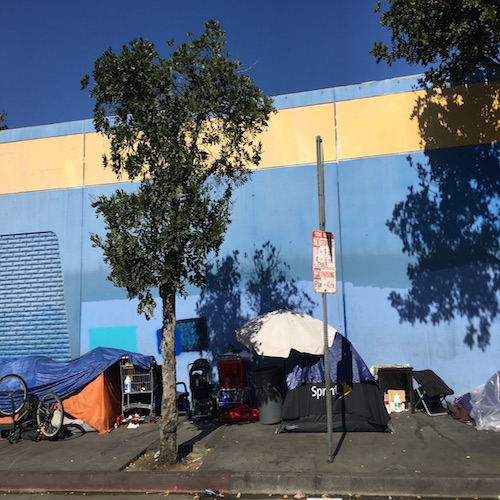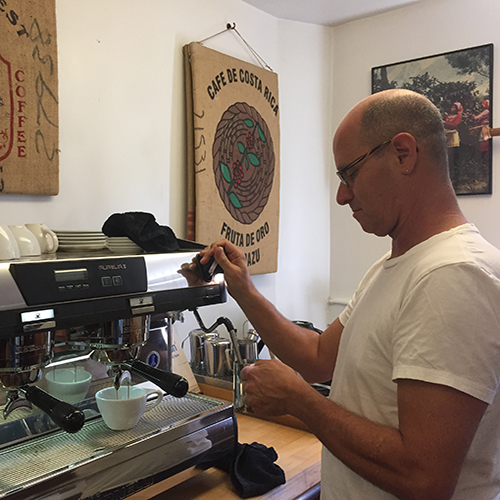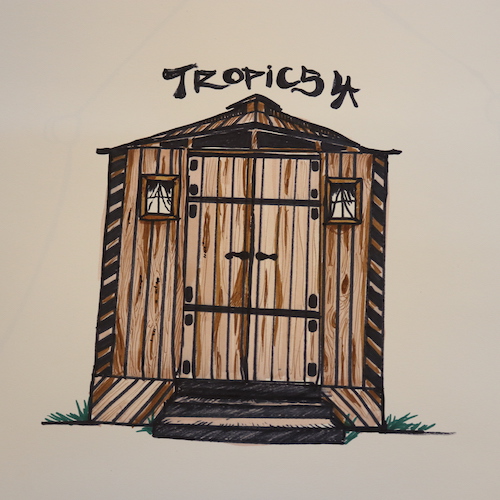On the corner of Martin Luther King Boulevard and South Main Street a trail of students file through the sleek gated entrance of the newly renovated Accelerated Charter Elementary School (ACES). Sonia Angulo, a 5th grade teacher at ACES, gathers her students and leads them up the stairs to room 204B. As they take their seats she points to a sign at the front of the room which reads:“Idioma Del Dia: Espanola,” or “Language of the Day: Spanish.”
Established in 2004, ACES features a unique dual-language immersion program which provides 50% of its classroom instruction in Spanish and 50% in English. The K-6 school is based on the Gomez and Gomez Dual Language Enrichment model, and the only program of its kind in Los Angeles. By providing equal instruction in both languages, it fosters bilingual and bi-literate students.
“I think it’s really important… it’s not just in the language but how they problem solve, and being able to see things from different perspectives, including in relationships with people,” said Susan Raudry, the principal at ACES for over 10 years.
An Inside Look: Accelerated Charter Elementary School
Accelerated Charter Elementary School features the only dual language immersion model of its kind in Los Angeles.
It is also a distinct academic advantage. According to research published by Wayne Thomas and Virginia Collier, students who continue their second language through 6th grade tend to academically outperform students who are not bilingual.
However, Raudry views bilingual programs as more than just a scholarly asset, but a way of connecting students to their cultural roots. “It’s also tied to family, if their parents were born outside of the country within a generation you lose that ability for the grandchildren to be able to communicate with the grandparent…My parents were immigrants but I was born here, and I felt like I lost a lot of my language,” she said.

First grade students play on their newly renovated jungle gym during recess.
ACES reflects the demographics of its South Los Angeles community, with a predominantly Hispanic student population. Nearly 50% of ACES students are English Language Learners, some of whom come from Spanish-only speaking households. In Ms. Angulo’s 5th grade classroom, one student, Genesis, is often a translator for her parents. “Sometimes we go to a friend's house and there’s someone who doesn’t know a language and she’s trying to talk to them and I help out…She does call me important sometimes and I think I’m doing a great job helping her with her English, she’s really improving,” she said.
“The kids feel very helpful to their parents if they’re able to translate for them, because parents actually sometimes depend on them — the child can speak English and Spanish well, so they kind of help them navigate the world.” Principal Raudry said.
Back in Ms. Angulo’s classroom students clamor to take out their books as they transition to social studies. Some sit with focused expressions as they color in parts of a map, while others raise their hands in response to questions about the history United States. If a student answers a question in English, Ms. Angulo gently reminds them of the “Idioma del dia,” the language of the day is Spanish.
Principal Raudry has seen the school flourish since its’ founding almost 13 years ago. “When I first started we were two blocks away at Saint Stevens church, we were 132 kids, six teachers… we were a tiny little school,” Raudry said. “It’s kind of exciting that I’ve been here for so long because I’ve gotten to see a lot of the kids grow up. Now we have this brand new campus and so many more students.”
Growing Up
Accelerated Charter Elementary School does more than prepare students in academics. They address each students needs to help them grow as individuals.
ACES’ new $37 million campus is in many ways an oasis for more than 400 students that attend. Imposing brick and concrete walls block out the noise of rushing cars; while in the courtyard, rows of planters filled with garden vegetables stand in stark contrast to an otherwise dense, urban landscape.
Each day students from 4th, 5th and 6th grade take charge of watering plants and removing weeds from the small gardens. At the end of the season, they can harvest their produce and even take some vegetables home to their families.
These gardens, which double as an outdoor science lab, are just one of the visible impacts of the school’s many community partnerships. Principal Raudry works with Elisabeth Weis, a senior lecturer at the USC Viterbi School of Engineering to develop projects that address a wide-range of the elementary school’s needs.

ACES' student-run gardens grow produce like eggplants, cucumbers and squash.
Weiss spearheaded the program in 2010 with the goal of leveraging engineering to solve real-world problems. As part of their capstone project, students from her advanced writing class, Engineering 340, are challenged to come up with creative ways to improve sustainability, academics and even school pride at ACES.
“They try to figure out a solution for a tough problem or a tough challenge that the school is having, but under constraints like space or budget. Everything they propose has to be cost effective and it has to be sustainable,” Weiss said.
Past student reports have been so compelling they spurred the creation of an after-school robotics class, a water bottle recycling program and even the implementation of a safer pick-up/drop-off system.
While these projects are developed specifically for the ACES community, their impacts extend beyond the campus walls. Jason, a 6th grade student responsible for the upkeep of the edible garden, applied his new knowledge of plants to gardening at home. “When I’ve taken care of plants in my house, I’ve always watered the leaves and they always die. Now I know we are supposed to water the roots instead of the leaves or else they dry out.” Working in the garden also inspired him to try new types of food, “I’d like to grow beets in this garden,” he said, adding, “I’ve never had a chance to try them.”
Outdoor science labs, pristine basketball courts, and state of the art classroom technology are just a few perks of going to ACES. Yet, 5th grade teacher Ms. Angulo says it's the community, not the environment, which makes ACES so special. “ When I began this position I saw there was a very strong sense of community…The teachers were all very united for a purpose. Everybody wanted to do well, everybody wanted to make a genuine difference. We’re all here really early and really late because we all want the same thing for the kids. We want what’s best for them and we want to see that they do better,” she said.


